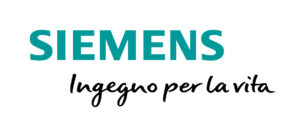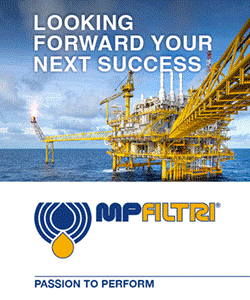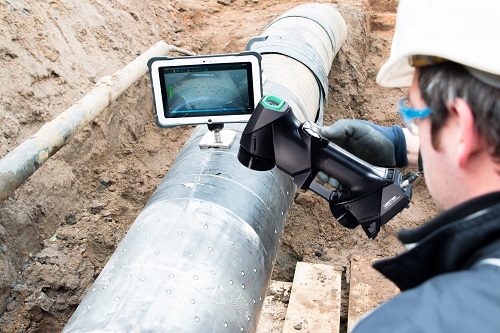
Today, environmental issues have become a priority that dominates public concern. Increasingly, governments are urged to adopt regulations to guarantee the integrity of aging pipeline networks. Pipeline owners, therefore, are under constant pressure from regulatory authorities and environmentalists to evaluate and maintain their pipeline network to the highest standards in order to prevent environmental catastrophe and ensure public safety.
Pipeline operators and non-destructive evaluation (NDE) service providers have access to several technologies and emerging methodologies to better monitor and assess pipeline deterioration. However, they also have to deal with continual pressure to minimize maintenance costs.
This article aims to illustrate the challenges faced by pipeline operators when assessing pipeline corrosion and mechanical damages. Inconsistent reporting, measurements that are highly dependent on the technician’s skills, and the multitude of tools and technologies used are among the challenges that technicians face on a daily basis. A non-destructive testing (NDT) solution that combines a 3D scanner and pipeline assessment software enables pipeline operators to solve issues encountered during inspections. In addition, this solution offers many benefits, such as easy and standardized reporting, fast data acquisition and analysis, and repeatable results.
Challenges in Pipeline Inspection
A multitude of technologies, vendors, tools, software, terminology, and reporting
To guarantee the integrity of their network, asset owners must inspect their pipelines directly or through NDE service companies. A complete pipeline integrity assessment requires the use of a wide range of NDT techniques to characterize the material integrity and provide a trusted diagnostic. To name just a few, these techniques include the following: Magnetic flux leakage (MFL) and ultrasonic (UT) methods are used to identify critical zones with external corrosion and mechanical damages. Phased array ultrasonic testing (PAUT) is used to detect the presence of internal corrosion. Manual measurement tools, such as the pit gage, are used to control surface corrosion, although traditional methods are getting replaced by new technologies, such as 3D scanning.
In short, throughout the inspection process, NDT technicians are expected to use different technologies from different vendors, each with their own tools, terminology, software, and reporting. While they may become familiar with and knowledgeable about one device that they use throughout a pipeline section, they may be required to use another technology, with different terminology, software, and reporting when called to inspect a new section.
Can technicians follow a simple procedure that would help them to use a device and software that have not been used for a while?
What is the step-be-step process to make sure they obtain repeatable and accurate results regardless of their knowledge of the equipment?
Technician and Environment Dependency
Manual techniques have the inconvenience of making the inspection highly dependent on the technician’s skills. Considering that measurements are taken in an unstable environment where vibrations prevail, this dependency may produce inaccurate measurements and variable results, which impact the quality of the report, the duration of the inspection process (due to the high number of data points that may need to be remeasured), and the maintenance costs.
How can inspections independent of the technician and the environment be obtained?
How can the risk associated with the technician and the environment be minimized?
Under Pressure Inspection
Pipeline integrity assessment is an expensive process for asset owners because, as NDT technicians inspect the pipeline, excavators wait and charge for their time. Consequently, technicians perform the tests and measurements under pressure. They do not want to make mistakes because they are aware, they will have to come back and do the inspection again, which will cost even more.
How can technicians feel more secure and confident when performing an inspection?
Inconsistent Analysis and Reporting
Asset owners often work with many NDE services companies, all of which use different technologies from different manufacturers and employ several technicians with different skill and experience levels. All these variables impact the measurement process and reflect on the results.
From one service company to another, and even from one technician to another in the same company, the parameters are different, and the analysis reports are inconsistent with one another. Thus, data analysis and report consistency become a serious issue and a potential source of questions and errors.
How can a consistent analysis report be obtained if different interfaces are used for reporting?
How can the right diagnosis be made if different parameters are measured and analyzed from one technician to another and from one service company to another?
Solutions for Pipeline Inspection
In the last decade, 3D scanning technology has proven its reliability as a trusted tool—especially when combined with powerful dedicated software—for assessing pipeline corrosion and mechanical damages. Many pipeline owners are now asking their NDE service providers to use an NDT 3D technology solution to perform pipeline inspections.
3D Scanning and Pipeline Assessment Software
An NDT 3D technology solution consists of a 3D scanner and pipeline integrity software. 3D scanners, such as Creaform’s HandySCAN BLACK, are considered to be the most accurate devices for measuring in unstable environments, such as excavation sites. They are also easy to use regardless of the technician’s expertise and experience. Indeed, if the same pipe surface is scanned twice, both scans will be identical, eliminating the impact of technician skill.
In addition to the added value of using metrology-grade scanners as an NDT 3D technology solution, pipeline assessment software, such as Pipecheck, supplies on-site inspection, detection, and characterization of pipe defects. The combination of both hardware and software produces accurate and repeatable results, which are traceable for future pipeline integrity analysis.
Pre-Configured Parameters
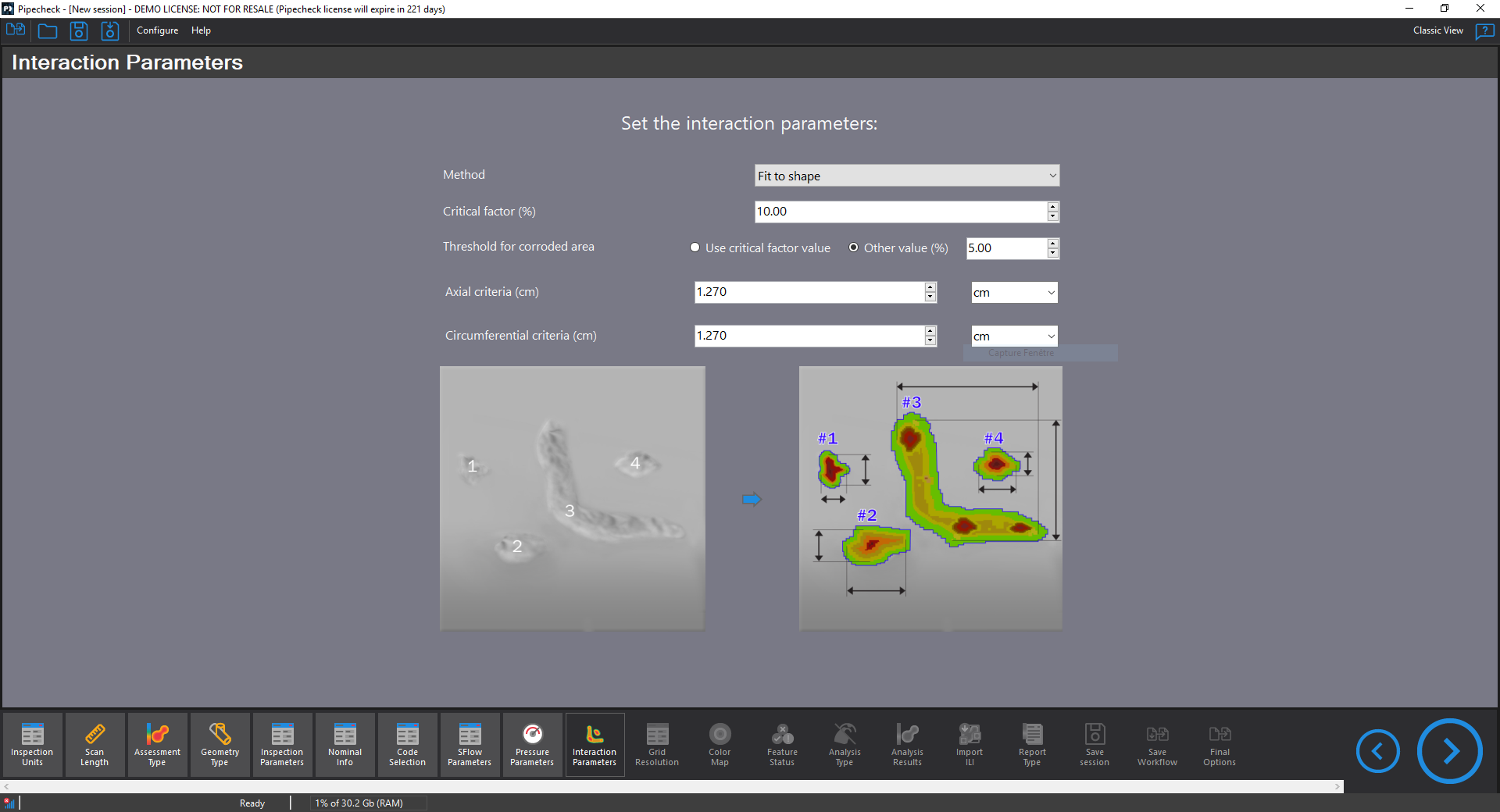
To facilitate communication between the pipeline owners (who are used to the same interface and parameters) and NDE service companies (who often work with multiple owners), pipeline assessment software must enable technicians to use templates in which parameters are pre-configured and saved. Then, parameters, such as the material grade, flow stress formulas, operating pressure or interaction rules, can be defined and loaded from an existing template that the asset owner is used to. This way, technicians can import data from their 3D scanner (or other assessment tools) and perform diagnostics based on the ASME B31G (corrosion) and B31.8 (mechanical damage) standards, always using the same interface and parameters.
Thus, service companies can choose a specific template depending on the client for whom they are providing a diagnostic. An NDT expert can also pre-configure, save, and lock all of the required parameters that the technician has to measure.
Thanks to this feature, which is specific to Pipecheck, all the needed parameters can be pre-configured, saved, and locked into specific templates in order to provide analysis reports that are consistent and based on the B31G and B31.8 standards. This approach reduces the risk associated with the measurement process and the NDT technician.
Pre-Defined Workflows
By definition, an NDT technician is not an expert in metrology or 3D scanning. They are trained for pipeline integrity assessment, where they must be able to use a variety of equipment and software from different vendors. Workflows have been implemented to guide them through the inspection process with 3D scanners.

The workflows, courtesy of Pipecheck, consist of a series of simple and detailed steps that technicians follow to obtain repeatable and accurate results. Workflows often include calibration steps and calculation parameters, such as the pipeline material and alloy, the wall thickness, and any other data that influence the mechanical and structural properties of the pipeline. With workflows, technicians are certain not only to remember everything when taking measurements with the 3D scanner, but also to understand, with clear visual support, the impact of each parameter on reporting. This way, even if they have not used a 3D scanner for a while, workflows remind and help them understand the step-by-step process to follow, ensuring complete peace of mind.
Benefits
Conventional methods are being replaced by new technologies, such as 3D scanning, which brings proven benefits to pipeline integrity assessment. Thanks to metrology-grade equipment, corrosion and mechanical damages can now be characterized with the highest accuracy and repeatability.
Combining the HandySCAN BLACK with Pipecheck (accurate dimensional measurements with easy and standardized reporting) enables technicians to computerize the manual inspection method and use a virtual pit gage. This solution, offered by Creaform, also provides repeatable results, reducing the risk associated with the technician’s skills and offering clear visualization and understanding with fast data acquisition and analysis.
Easy and Standardized Reporting
Pipecheck offers easy and standardized reporting for corrosion assessment. This benefit is important when the reports are coming from multiple NDE service providers working on different jurisdictions and mandatory procedures. The NDT technician can choose, for instance, to get a diagnostic code that is compliant with ASME B31G, B31G modified, and effective area code or, simply, to obtain an analysis with the deepest points and other standard parameters. Thus, no matter the technician’s selection, all the information for corrosion inspection is easily reported.
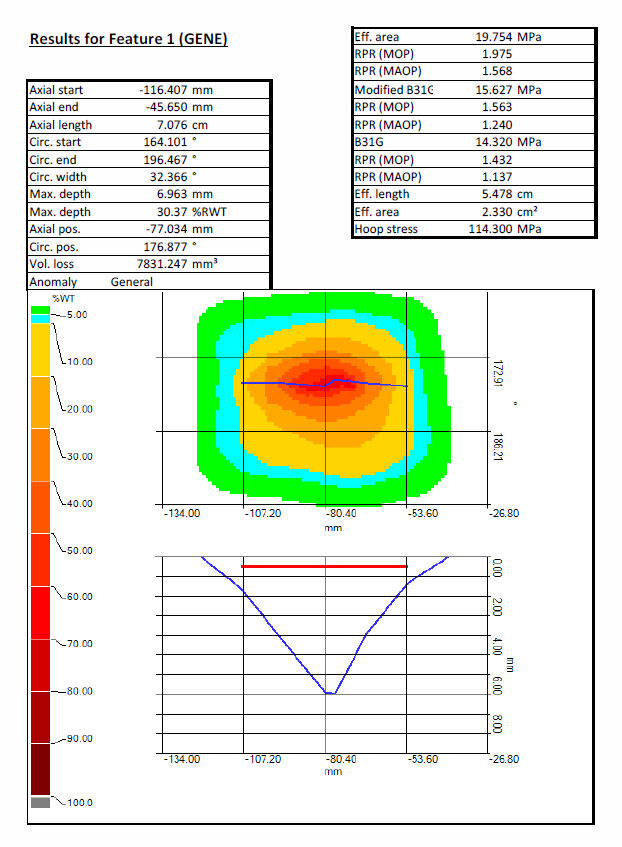 Corrosion damage detailed report
Corrosion damage detailed report
Clear Visualization and Understanding
Pipecheck offers both 2D and 3D representations of the corroded or mechanically damaged pipes, which ensure a clear visualization and understanding of the pipeline condition over the entire scan. For corrosion mapping, for instance, the analysis software automatically finds the deepest points to retrieve the most probable path of failure on the corrosion zone and apply an overlay on the 3D view. Each corrosion zone is analyzed separately, according to the selected interaction rules, to obtain its position, maximum depth, and burst pressure.
Fast Data Acquisition and Analysis
With an acquisition rate of 1,300,000 points per second, a scanned surface is reconstructed in real time to form a 3D mesh file (.stl). Due to the instant meshing, technicians can check the surface acquisition on their laptop or tablet screen. Moreover, running a complete data analysis can take as little as 30 seconds. Finally, one technician is able to carry and deploy the 3D scanner on-site and perform both the data acquisition and analysis, thus minimizing the time and cost associated with the inspection.
Repeatable Results
To ensure repeatable results, measurements must be independent of the environment or technician. 3D scanners use reflective targets that are positioned randomly on the pipeline. This way, the scanner, with its binocular vision, can reference itself by triangulation and acquire points on which the instability of the environment and the knowledge of the technician will have no effect.
Conclusion
Pipeline operators face many challenges when assessing pipeline corrosion and mechanical damages. They must use different technologies from different vendors, each with their own tools, terminology, software, and reporting. In addition, inspections occur in harsh and unstable environments, where vibrations rule, while tests and measurements are performed under pressure as other workman charge time for waiting. All of these inconveniences may cause inconsistent results and reporting.
Fortunately, an NDT solution that combines a 3D scanner with pipeline assessment software enables pipeline operators to solve these issues. Thanks to the pre-configured parameters and pre-defined workflows available in pipeline integrity software, 3D scanning has never been easier and reporting has never been better standardized. Plus, because scanning data is repeatable and results are the same regardless of the user’s skills and expertise, the measurement is not only independent of the user, but also of environment instabilities, an important step forward for pipeline inspections in the oil and gas industry.
Author: Jerome-Alexandre Lavoie, Product Manager

